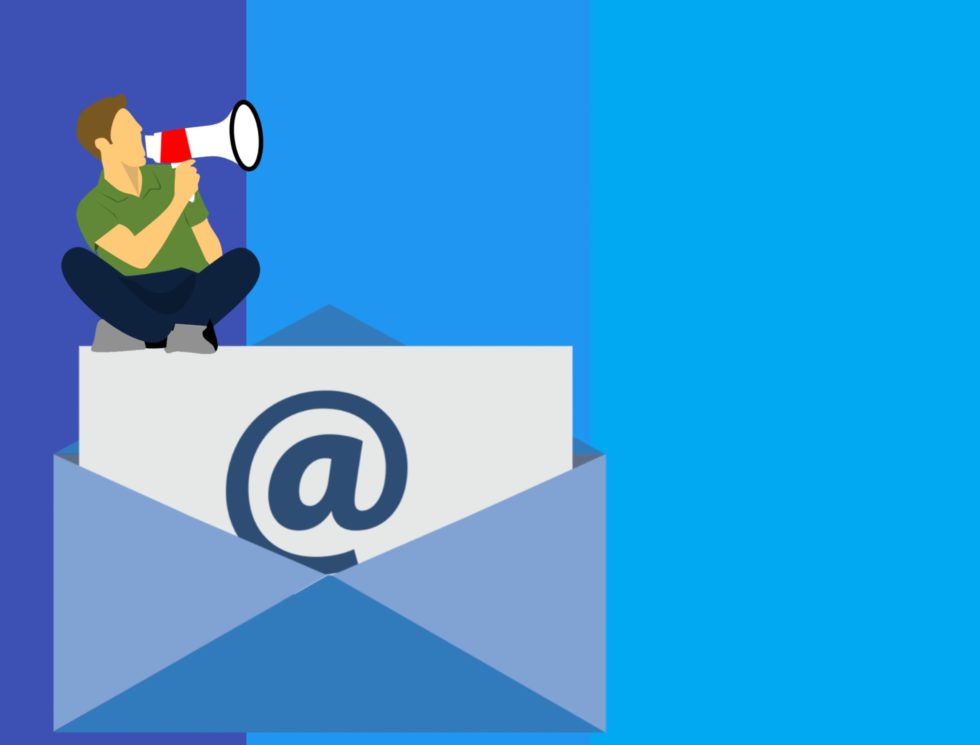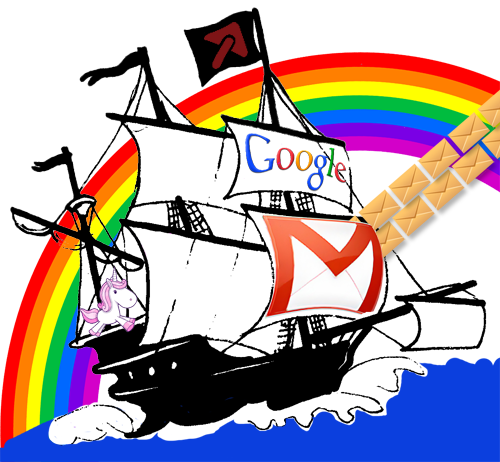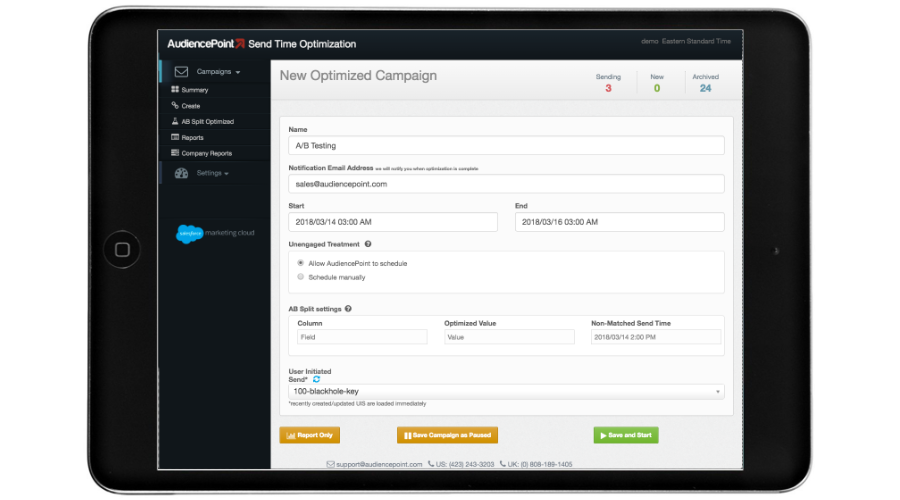AudiencePoint is thrilled to announce our new integration with Klaviyo! AudiencePoint is looking for partners to pilot our...
Having an engaged list of email subscribers is highly beneficial for your business. Engaging marketing emails lead to:
- Building a relationship with your customers
- Increased customer satisfaction
- Increased sales
- Higher likelihood of repeat purchases
Increasing customer engagement can seem intimidating, but it doesn’t have to be. This article will walk you through everything you need to know about how to engage customers through email and ways you can optimize your marketing emails to increase email engagement. Keep reading to learn more.
Crafting Engaging Email Content
Engaging your audience starts with the content of your emails. Beyond just sharing information, it’s crucial to catch your reader’s attention from the get-go. Creating captivating subject lines is your first step to success. Think of your subject line as the front door to your email; it should be inviting and intriguing. For example, instead of “Monthly Newsletter,” try “Unlock Our Secrets: Your Monthly Insider Guide.”
Personalization takes your emails from good to great. It’s about showing your subscribers that you know them. Use their name, reference their past purchases, or tailor content based on their interests. Imagine receiving an email that feels like it was crafted just for you. That’s the power of personalization. It transforms your emails from generic broadcasts into meaningful conversations.
Segmentation and Personalization Strategies
To truly connect with your audience, segmentation is key. It’s the process of dividing your email list into smaller, more specific groups. Why? Because a one-size-fits-all email doesn’t fit anyone perfectly. Segmentation allows you to tailor your messaging to fit the unique needs and interests of different groups. For instance, new subscribers might receive a welcome series, while long-time customers get loyalty rewards.
Personalization goes hand in hand with segmentation. It’s about crafting messages that resonate personally with each segment. Data analytics play a big role here, helping you understand patterns and preferences within your audience. For example, if a segment of your audience frequently purchases eco-friendly products, sending them emails focused on sustainability will likely engage them more effectively.
Interactive Emails and Innovative Formats
In the digital age, interactivity in emails is like a breath of fresh air. Interactive elements such as polls, surveys, or even simple quizzes invite participation, making your emails a two-way conversation. Imagine asking your subscribers to vote on their favorite product design directly within the email. This not only increases engagement but also gives you valuable insights.
Innovative formats are about breaking the mold. Have you considered embedding a video tutorial or a GIF that demonstrates a new product? These elements catch the eye and can convey your message more effectively than text alone. Responsive design is also crucial; your emails must look great on any device, ensuring a seamless experience for all subscribers.
By incorporating these strategies, your emails will not only capture attention but also build a stronger, more interactive relationship with your audience. Remember, email marketing is not just about sending messages; it’s about creating a dialogue and delivering value that resonates with your subscribers.
How Do You Engage Customers Via Email?
The best way to engage customers through email is to make your emails a valuable experience for the reader. You can do this by creating emails that:
- Provide valuable information
- Solve a problem for the reader
- Are entertaining or enjoying to read
When writing your emails, consider how you can provide value. Once you start thinking about delivering value to the customer, writing engaging emails will become easier.
How Do You Write Engaging Marketing Emails?
Now that you know that value is the key to email marketing engagement, it’s also essential to understand how to write an engaging email. Some of the best ways to write engaging marketing emails are to:
- Tell a story: Bring your brand or product to life through the art of storytelling. For example, tell the story of how your brand started, your personal story that created your passion for your product, or share a customer success story.
- Break up your text: Keeping sections of text concise will make your emails easier to read. Breaking up your text by keeping your paragraphs short or putting visuals between sections of text will keep customers engaged while reading your emails.
- Put yourself in your customer’s shoes: Think about what your ideal customer wants to read and write emails that satisfy their needs. For example, if your brand is in the fitness industry, you could send out a daily email with workout tips or motivation. This content provides value to your email subscribers that they can’t wait to open every day.
By implementing these tips, you can begin writing more engaging emails that make your subscribers always look forward to opening them.
How Can I Improve My Email Engagement?
Many strategies can increase the engagement of marketing emails. Common ways you can improve email engagement are:
- Creating good subject lines that lead to high open rates
- Optimizing send times
- Providing a clear call to action
- A/B testing to optimize your content
Marketing constantly involves optimization, and you will learn what your email subscribers tend to respond best to over time. Keep reading to learn how to improve engagement with each of these techniques.
How to Create Subject Lines that Increase Email Clicks
When creating a subject line that generates clicks, you must consider your target customer’s wants or needs. For example, consider a brand that is selling an electric toothbrush. A general subject line that might be used is “The Benefits of Using Our Electric Toothbrush.” While this subject line can get people to click, it’s likely not the most effective.
A better option is to look at the wants and needs of your target customer. In this case, you may find that they want a product that whitens their teeth. In this scenario, a better subject line would be, “Get whiter teeth in 30 days” This subject line will get more clicks because it targets the customer’s needs and provides a time-based result they will get from using the product. It also gives you an indication of customers who are not interested in whiter teeth but are interested in another benefit of the toothbrush.
Optimizing Send Times for Engagement
An important aspect of email engagement is sending emails when customers are likely to see and open them. AudiencePoint’s email marketing send time optimization software can help you with this through real-time analysis of email campaigns that show you metrics on when your subscribers are most likely to open emails.
Providing a Clear Call to Action
When writing your marketing emails, you must think about the goal you want to achieve with your email. Once you have a goal, you can create a call to action that tells readers what you want them to do. If you want them to make a purchase or learn more about your product, providing a “learn more” or “purchase now” button at the end of your email can be a successful call to action that helps you achieve your goals.
A/B Testing for Engagement
A/B testing is an excellent way to optimize emails for more engagement. A/B testing is a method that allows you to compare different aspects of emails to see which one is more effective. For instance, if you were debating between two different subject lines, you could send half of your subscribers an email with one subject line and the other half of your subscribers the second subject line. You can then compare which subject line leads to a higher open rate. A/B testing allows you to improve your email engagement over time by learning what your email subscribers respond to best.
Conclusion
Email marketing customer engagement is highly beneficial for any business looking to increase sales and build customer loyalty. To improve email engagement, remember to provide value, track email metrics, and target the wants and needs of your customers. If you follow the steps in this article, you will be on your way to creating more engaging marketing emails. For more help creating engaging emails, AudiecePoint’s software can provide you with real-time metrics, optimized send times, and subscriber insights for email engagement.
Contact AudiencePoint to learn more today!





